DPNA: 1st Draft of Parsons Project is too Suburban, Turns its Back on Fair Oaks, Skirts Regulations
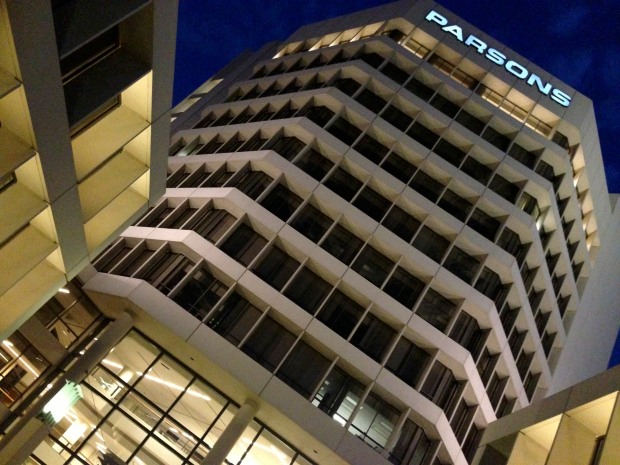
The property containing the Parsons Headquarters has been sold to a developer who plans to keep the existing buildings and fill the surrounding parking lots with buildings that do not fit the urban character of Pasadena and which do not live up to the incredible potential of the site.
[UPDATE: As of Nov 2014, the plans for this project have been significantly improved to respond to our critique, below, which was echoed by a host of other Pasadena organizations and commissions. We continue to monitor progress.]
Letter to the Design Review Commission, Feb 2014:
Written by the DPNA Land Use and Economic Development Committee, and approved by the Board of Directors.
In the view of the DPNA, the Project is a suburban office park of a scale and character consistent only with the existing Parsons Headquarters building – not of a scale, character, design, or uses, appropriate for a 21st century urban infill project situated directly adjacent to, and at a gateway point of, the Old Pasadena National Register Historic District.

The proposed plans. Lincoln Property Company wants to add 3 office buildings and several large apartments fronting Fair Oaks Ave.
In order to accommodate the proposed Project, a “Planned Development” (“PD”) is being written which will, if approved, will be inconsistent with the 1994 City of Pasadena General Plan (“General Plan”) and will vacate and replace important portions of the 2004 Central District Specific Plan (“2004 Specific Plan”) and the Zoning Code. These current plans and codes contemplate an extension of the land use and urban form of Old Pasadena.
The proposed Project does not comply with the current General Plan, 2004 Specific Plan, or Zoning Code, but rather reflects Pasadena’s previous vision of the 1970s of a “Corporate Headquarters City.” The 1970s vision was implemented through a redevelopment program whose primary goals was to assemble small parcels, clear existing structures and then redevelop the site as a single stand-alone project typically found in a suburban environment.
The vision of the City has changed significantly since then as set forth in the community-driven 1994 General Plan, which values a more compact, walkable, urban place and the City’s historic places and resources. There is no compelling reason to develop a PD which vacates and replaces long-existing City rules and regulations to accommodate this project.
Quite the contrary.
This proposed Project not only should live within existing, long-held plans and codes but also be held to the highest standard for the community-based General Plan and the 2004 Specific Plan and Zoning for this area.
The primary reason for this higher standard is that the opportunity exists solely because of past City actions to subsidize redevelopment of land which is now the Parson Corporation Headquarters.
In the early 1970s, the former Pasadena Redevelopment Agency (“PRA”) assembled/purchased the 22+ acre site; relocated existing businesses and residents; demolished all existing buildings, including the existing retail uses and building along North Fair Oaks Avenue between Union and Walnut Streets; vacated and removed North De Lacey Avenue and Mary Street; removed all other streets, sidewalks, and other public improvements; relocated all existing utilities, and then graded the site.
The PRA then sold the prepared site to the Parson Corporation at the substantially subsidized price of less than $4.00 per square foot.
Moreover, Lincoln Property purchased the property with the knowledge of the long-standing twenty- year old General Plan and the ten-year-old 2004 Specific Plan policies and rules in place; now Lincoln Property wants to change the long-standing community rules.
Why repeat the mistakes of the 1970s by creating a virtually “enclosed” space (e.g. Plaza Pasadena) rather than continue with the demonstrated economic success of Old Pasadena?
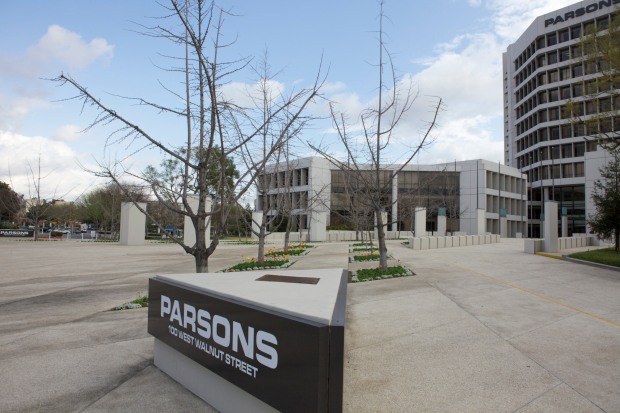
This proposed Project should be held to the highest standard, not a lower standard. This opportunity exists solely because of past City actions to tear down a neighborhood and subsidize a corporation.

In the early 1970s, the former Pasadena Redevelopment Agency (“PRA”) assembled/purchased the 22+ acre site; relocated existing businesses and residents; demolished all existing buildings, including the existing retail uses and building along North Fair Oaks Avenue between Union and Walnut Streets; removed North De Lacey Avenue and Mary Street; removed all other streets, sidewalks, and other public improvements; relocated all existing utilities, and then graded the site. The PRA then sold the prepared site to the Parson Corporation at the substantially subsidized price of less than $4.00 per square foot.

Moreover, Lincoln Property purchased the property with the knowledge of the long-standing twenty- year old General Plan and the ten-year-old 2004 Specific Plan policies and rules in place; now Lincoln Property wants to change the long-standing community rules. Why repeat the mistakes of the 1970s by creating a virtually “enclosed” space (e.g. Plaza Pasadena) rather than continue with the demonstrated economic success of Old Pasadena?
The proposed Project must conform to long-existing plans and regulations of the City of Pasadena. As set forth in the city’s Municipal Code, the PD zoning district is intended for sites where an applicant proposes and the City desires to achieve a particular mix of uses, appearance, land use compatibility, or special sensitivity to neighborhood character.
Specifically, according to the City’s Municipal Code, the PD is to be utilized to allow certain types of development consistent with the General Plan only under standards significantly more restrictive than those of a base district in which the use is permitted.
Importantly, the Zoning Code does not permit an increase in height, residential density or (a) land use(s) that are inconsistent with the General Plan and the 2004 Specific Plan.
However, the land use being requested by Lincoln Property along North Fair Oaks Avenue – Work/Live Units – is inconsistent with the adopted 2004 Specific Plan which calls for “Retail continuity and buildings that engage the street …” and a mixed-use infill development (ground floor retail with upper floor housing or office) of the parking lot area along North Fair Oaks (among other policies, guidelines and recommendations) which encourages retail continuity and pedestrian-oriented uses.
For these reasons, the DPNA respectfully requests that the Design Commission recommend to City Council that it direct staff to immediately cease further allocation of staff time and resources to the PD and work with Lincoln Property to better insure that its Project meets the City of Pasadena’s adopted vision, policies, rules, standards and regulations.
POLICIES AND STANDARDS:
1994 GENERAL PLAN,
2004 CENTRAL DISTRICT SPECIFIC PLAN,
AND ZONING CODE
According to the Zoning Code, among the purposes of a PD are “To allow certain types of development consistent with the general plan only under standards significantly more restrictive than those of a base district in which the use is permitted“. (City of Pasadena Municipal Code Section 17.26.020 C.) [emphasis added] According to the Zoning Code, a PD cannot be used to increase height, density and land use as set for the in the applicable specific plan. With respect to Land use, the Zoning Code specifically states: “Any allowed or conditionally allowed use authorized by this Subsection may be included in an approved PD plan, but only when it is deemed consistent with the General Plan and any applicable specific plan. [Zoning Code Section 17.26.020, Section C.3.b. – emphasis added]). As a basis for evaluating the proposed Project’s fit with the Central District and with Old Pasadena specifically, the DPNA analyzed the long-established Land Use and Mobility policies, rules and regulations of the City of Pasadena.
Among those Policies in the General Plan pertinent to the proposed Project are the following:
“Policy 5.7 – Enhanced Environment: Development should be shaped to improve the environment for the public; it should support the distinctiveness of the locality and region as well as the special characteristics of the existing fabric of the site’s immediate surroundings.” (p. 15)
“Policy 20.8 – In-fill and Revitalization Site: Transit-oriented development on in-fill and revitalization sites should redevelop underutilized parcels and incorporate existing surrounding uses into the form and function of transit-oriented development.” (p. 26)
“Policy 21.1 – Urban Design: Urban design programs shall encourage pedestrian-oriented development, including encouragement of pedestrian circulation among parcels, uses, transit stops and public and publicly accessed spaces; requiring human scale; encouraging varied and articulated facades; requiring regular visual (as in the use of first floor windows with clear glass) and physical access for pedestrians; requiring that ground floor residential and commercial entries face and engage the street; and encouraging pedestrian -oriented streetscape amenities.” (p. 26)
“Policy 21.2 – Shop Orientation: Encourage a balance in the configuration of shops in the downtown between pedestrian and auto comfort, visibility and accessibility; anchor stores shall orient to the street and transit stops in addition to parking lots, and small shops shall orient primarily to pedestrian and urban open spaces.” (p. 26) [emphasis added]
“Policy 21.3 – Pedestrian Access: Encourage clear, direct and comfortable pedestrian access to the City’s urban core and transit stops.” (p. 26)
“Policy 22.1 – Pedestrian Movement: Intersections and streets within transit-oriented development shall be designed to facilitate pedestrian movement.” (p. 26)
In order to be consistent with and to carry out the General Plan, the Central District Specific Plan established the Sub-district of Old Pasadena which includes the Northwest Gateway/Parson Precinct. The major goal and objectives of this precinct is as follows:
“The Northwest Gateway/Parsons Precinct will continue to serve as a major employment center, anchored by the Parsons Corporate complex; however the addition of mixed-use and residential development will reinforce the diverse, pedestrian character of Old Pasadena.” (p. 45) [emphasis added]
“A-1. Northwest Gateway/Parsons: This precinct is dominated by the Parsons corporate complex, including its surface parking lots. The suburban, auto-oriented charter of the complex stand in stark contrast to nearby development, however, mixed-use infill along the street edge would better integrate this area with its surroundings.” (p. 97) [emphasis added]
“Parson Infill: The Parsons corporate complex breaks the traditional street oriented development pattern of Old Pasadena. Mixed-use infill (for instance, housing or office over shops) of the complex’s expansive parking lots should establish a more urban character appropriate to the Sub-district, strengthen connections to adjacent uses, and mark the NW gateway to Downtown.” (p. 99) [emphasis added]
The 2004 Specific Plan calls for a ground floor remodel of street level retail as well as a facade “reskin” remodel of the Parsons office building at the southwest corner of Holly Street and North Fair Oaks; also, it calls for a mixed-use infill development (ground floor retail with upper floor housing or office) of the parking lot area along North Fair Oaks. (p. 101)
The 2004 Specific Plan’s “Old Pasadena Linkage Concept” shows North Fair Oaks Avenue as a “Primary Downtown Gateway” from Northwest Pasadena and as a “Multi-modal Corridor” with a “strong pedestrian orientation.” (p. 98)
“Guideline CC 6 Promote Sensitive Infill Projects (p. 134)
“Intent New development should positively contribute to the public realm. Urban infill development offers an excellent opportunity to strengthen historic development patterns and restore the urban fabric. Vacant and underdeveloped lands interrupt the street wall and prevent suitable definition of the street, a condition commonly referred to as “missing teeth.” Infill projects can visually unify the street through the development of these properties. Nonetheless, sensitivity to the surrounding character and design context is crucial to their success.” [emphasis added]
“Recommendations
“CC 6.2 Support infill development that visually unifies the street; respect the street-oriented development patterns of existing buildings.”
“CC 6.3 Harmonize infill development with adjacent buildings through compatible scale, massing rhythms (i.e., vertical and horizontal patterns expressed by architectural features such as cornice and belt line, doors and windows), solid-to-void relationships and/or materials.”
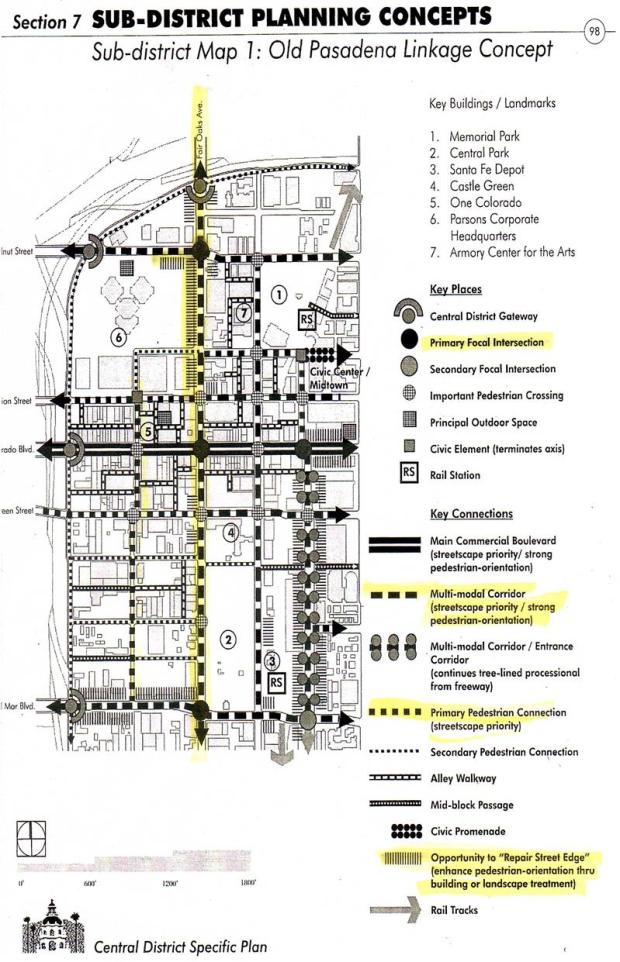
“Guideline SP 1 Encourage Integrated Site Planning (p. 145)
“Intent New development in the Central District should contribute to the coherent sense of the whole. This idea stresses: reinforcing the architectural context, placing a strong visual emphasis on the street, and supporting active public space. Likewise, developments that turn inward, result in left-over space or fail to address public life are inappropriate. Fulfillment of these wider design objectives requires an integrated approach to site planning. Building, parking, service access, plazas, and courtyards must each recognize the important relationship between public and private space.” [emphasis added]
“Recommendations
“SP 1.3 Discourage developments that are internally focused at the expense of an active street environment or developments that result in “left-over” space.” [emphasis added]
“Guideline BD 4 Activate the Street Edge (p. 155)
“Intent
Accommodating public use at the ground floor is critical to a socially and visually stimulating Downtown, and street level facades offer the great opportunity to support pedestrian activity. Multiple storefronts, shop entrances, and activities enliven the street, sustain attention, and provide a safe pedestrian environment. Generous windows placed at the ground floor give people inside knowledge of those of the street, and the people on the street gain an awareness of the activity inside. This phenomenon is commonly referred to as “eyes on the street,” and supports an active 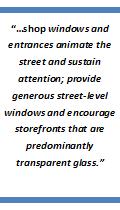 day and night street environment.”[emphasis added]
day and night street environment.”[emphasis added]
“Recommendations
“BD 4.1 Promote active, pedestrian oriented uses with a high degree of transparency along the street; uses should be readily discernible to the passer-by.”
“BD 4.3 Encourage a frequent cadence of storefront entrances along street where a pedestrian-oriented environment is especially desired.”
“BD 4.5 Rely on shop windows and entrances to animate the street and sustain attention; provide generous street-level windows and encourage storefronts that are predominantly transparent glass.”
Guideline BD 7 Emphasize Human-Scale Design (p. 158)
“Intent The individual interacts with the street level of a building in an intimate fashion, and this is likely to influence our perception or the entire place. If emphasis is placed on the human-scale, buildings will communicate that Downtown is an inviting and pleasant living environment. Rich visual details at the street level add interest and character to the facade, setting the stage for an active street environment and reinforcing pedestrian comfort.” [emphasis added]
“BD 7.1 Distinguish the ground level of a building from the upper levels of a building, especially where a building orients to the street and/or define public space.”
“BD 7.3 Use design elements such as separate storefronts, display windows, shop entrances, exterior light fixtures, awnings and overhangs to add interest and give a human dimension to street-level
building facades.”
“BD 7.5 Give greater attention to detail at the street level of a building to satisfy the pedestrian; emphasize details that modulate the light and provide evidence of artistry and craft.”
In Zoning Code Section 17.30.030 – CD District Land Uses and Permit Requirements, the Parsons site is situated in the CD-1 – Old Pasadena Sub-district. The purpose of this Sub-district is “…to maintain and reinforce the historic character of the area, and to support its long-term viability as a regional retail and entertainment attraction through the development of complementary uses, including medium to high-density housing near light rail stations.” Also, according to Figure 3-4 – Central District Housing/Ground Floor Map in the Zoning Code, housing is permitted on the Parsons site, except on the ground floor.
DPNA SPECIFIC OBSERVATIONS AND RECOMMENDATIONS
The proposed Project which is bordered on two sides by the Old Pasadena National Register District is incompatible with the District in character, land use pattern and design.
The proposed Project turns inward and is “self-referencing”, thereby turning its back on Old Pasadena and North Fair Oaks.
The proposed Project is a corporate campus, serving as a disconnected appendage of Old Pasadena. Rather, the Project should creatively transition the design and mix of uses that connect the Old Pasadena Historic District to North Fair Oaks and extend northward the current retail activity of Fair Oaks to a more contemporary design for office uses at western edge on the site along Pasadena Avenue.
Because the changes being proposed through the PD involve both the General Plan and the Central District Specific Plan, the City needs to form a community-based Task Force to provide guidance to the proposed Project. The rules are being written around the Project, rather than around the vision, goals and objectives of the General Plan and the Specific Plan established through a robust public involvement process.
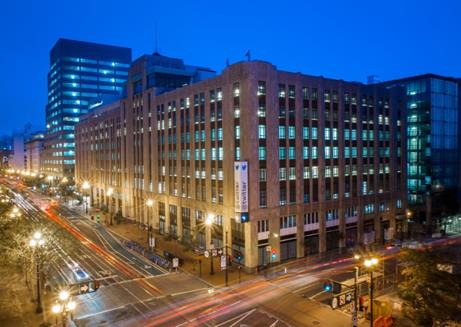 Francisco; and the tech firms now moving into “Silicon Beach” between Santa Monica and Venice. Though all different in scale and design, the common elements in each is their physical connection to, full integration into, and synergy with the existing neighborhoods.
Francisco; and the tech firms now moving into “Silicon Beach” between Santa Monica and Venice. Though all different in scale and design, the common elements in each is their physical connection to, full integration into, and synergy with the existing neighborhoods.The Project completely ignores North Fair Oaks’ critical role as the Major Gateway from Northwest Pasadena to Old Pasadena both as a pedestrian and transit linkage.
The proposed Project is suburban in nature – the “boundaries” of the Project define its character. Proposed enhanced linkages to the Civic Center and City Hall are desirable, but do not compensate for its lack of effective linkages to Old Pasadena and to the Northwest.
The proposed concept of a Work/Live Unit land use along North Fair Oaks means no active pedestrian engagement with the street.
Without liner retail along North Fair Oaks, there will be no active “eyes on the street”. Instead, Work/Live Units are not a “Retail” land use as defined in the Zoning Code and would not generate robust street activity/active pedestrian engagement during the day and evening. Work/Live Units generally revert to a purely residential use; work activity may not always be present unless heavily monitored and regulated.
Moreover, “ancillary” retail is planned inside the Project; as a result, it will not be exposed to the public street and the wider retail market. This “ancillary” type of retail will likely have business hours that coincide with the tenants in the Project rather than the customers in Old Pasadena.
Importantly, the lack of any significant retail fronting North Fair Oaks misses the opportunity to (a) strengthen existing North Fair Oaks retail activity, attracting a new businesses and customer base, and (b) create synergy with existing Old Pasadena retail, one of the most successful retail markets in the Los Angeles region. Significantly, it negatively impacts exiting retail on the opposite eastern side of the street.
The Project directs pedestrians to walk inside the Project from the southwest corner of Walnut and North Fair Oaks. As a result, pedestrian movement along North Fair Oaks between Holly Street and Walnut will be essentially “privatized”.
The Project provides for a pedestrian passageway linkage on North DeLacey Avenue between Holly Street and Union Street as its primary link to Old Pasadena. However, this passageway will be bordered by “blank” garage walls on either side with no active uses between Leonard J. Pieroni Street (i.e. Holly St. extension) and Union Street between Fair Oaks and Pasadena Avenue.
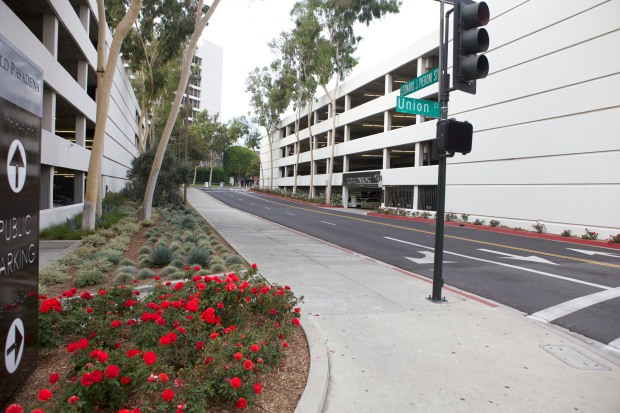
a pedestrian passageway linkage on North DeLacey Avenue between Holly Street and Union Street as its primary link to Old Pasadena. However, this passageway will be bordered by “blank” garage walls on either side
Those garages will also deaden the Project park space that is being planned on the north side of Leonard J. Pieroni Street between Fair Oaks and Pasadena Avenue.
The Project which is horizontal mixed use does not reinforce the visual character of Old Pasadena which is a well-known and often copied national vertical mixed use success story – housing and/or office over retail. The Project is not true mixed use in an urban sense – it is composed of “suburban development pads”, separate islands of corporate and residential uses with ancillary retail to service corporate and residential tenants in the “office park.”
The Project schedule is being driven by the availability of financing for rental residential market, so the first phase should be thought of first as a residential infill project, not an office project, in terms of design on North Fair Oaks. Lincoln Properties should thoroughly explore the urban retail opportunity, along with an appropriate residential product, both location and design. The existing (and preexisting) grid pattern of the surrounding area should be fully explored in terms of site design rather than arranging suburban development pads. All the office space referred to by Lincoln Property is speculative.
While the Project states it is targeting technology and “creative” class workers, market trends do not support demand from this demographic for suburban corporate campuses, separate and distinct from its city environs. Whether “Googlers,” Yahoo, or other technology workers, whether for work or living, such workers desire loft-like, unique space with character, in authentic, walkable, thriving neighbors like Old Pasadena – not a suburban corporate campus. Good examples of this type of space are the offices of IdeaLab, an adaptive reuse of an historic brick building and Lincoln Property Company’s own recent acquisition of “The Desmond Building” in downtown Los Angeles.
The planned park is not truly available as a public benefit; as described by Lincoln Property, it will, at best, primarily serve the needs of the private tenants of the Project because it is located in the middle of the Project. Furthermore, multi-level parking garages adjacent to the south adversely affect potential enjoyment of the park by its users.
In his presentation to the DPNA, Tim Walker stated that a retail consultant engaged by Lincoln Property Company does not believe that destination or neighborhood-serving retail can succeed along North Fair Oaks. Given the success of Old Pasadena, the DPNA questions this conclusion. Also, if no space is planned for such retail, it will never be present as long as the Project exists. This could have negative economic impact for the next 50 or more years.
We believe that an urban retail strategy performed by a firm with local knowledge of Pasadena and with an understanding of urban economics is required. Such a strategy could include local neighborhood–serving retail, entertainment, and/or other retail types. DPNA believes retail will work because the Project itself will generate demand (a “market-maker”) for it. Also, the immediately adjacent uses provide comparables to support retail feasibility. Also, local ground floor retail, services, and small customer-oriented professional office space that currently exist opposite the Project along North Fair Oaks, will be reinforced with such retail and office uses across the street.
RECOMMENDATION:
The DPNA respectfully requests that the Design Commission: (1) determine that Lincoln Property’s proposed preliminary project concept and design elements do not conform to the requirements of the General Plan, 2004 Specific Plan, or Zoning Code; (2) request Lincoln Property to revise its proposed Project to conform with the standards set forth within the General Plan, 2004 Specific Plan, and Zoning Code as highlighted in this letter, and (3) recommend to the City Council that it direct staff to immediately cease further allocation of staff time and resources to the PD and further direct staff to work with Lincoln Property to better insure that its Project meets the City of Pasadena’s adopted vision, policies, rules, standards and regulations.
Thank you for your consideration of our comments and suggestions.
DPNA Land Use and Economic Development Committee
DPNA Board of Directors, February 2014
.
.
ABOUT THE DPNA:
The Downtown Pasadena Neighborhood Association (DPNA) is the voice of the residents of the Central District of Pasadena, California.
We meet monthly on the Third Thursday at 6:30pm in the Gamble Lounge of Pasadena Presbyterian Church at 585 E Colorado Blvd.
The DPNA promotes a walkable urban lifestyle in a city that is vibrant with thriving businesses, excellent arts, good government, and active public spaces.
The DPNA advocates for urban parks, wider sidewalks, pedestrian-biased street design, bike lanes, trees & shrubbery, mixed-use & transit-oriented development, enduring architecture, a streetcar, and other amenities that improve life for residents of an urban city center.
Downtown Pasadena is defined roughly as the 210 freeway (north), Catalina Ave (east), California Blvd (south), and Pasadena Ave (west).
Subscribe to the DPNA newsletter
Sign up for our email newsletter!
We send out 1-2 emails per month with updates about what we’re doing.
Please add yourself to our contact list by clicking:
That webpage will guide you through the sign-up process.
After typing your info, you’ll receive an email which you’ll have to confirm.
.
.
.
.
.


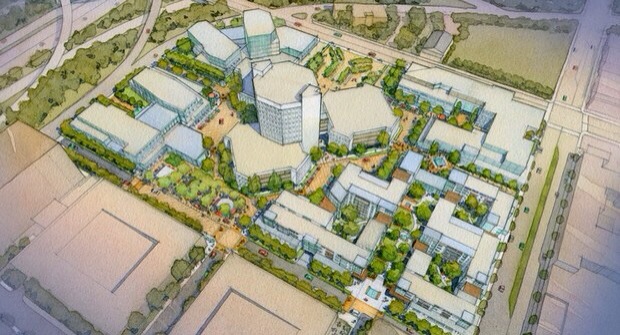

Pingback: Election for Pasadena Mayor: DPNA Candidate Forum | Downtown Pasadena Neighborhood Association